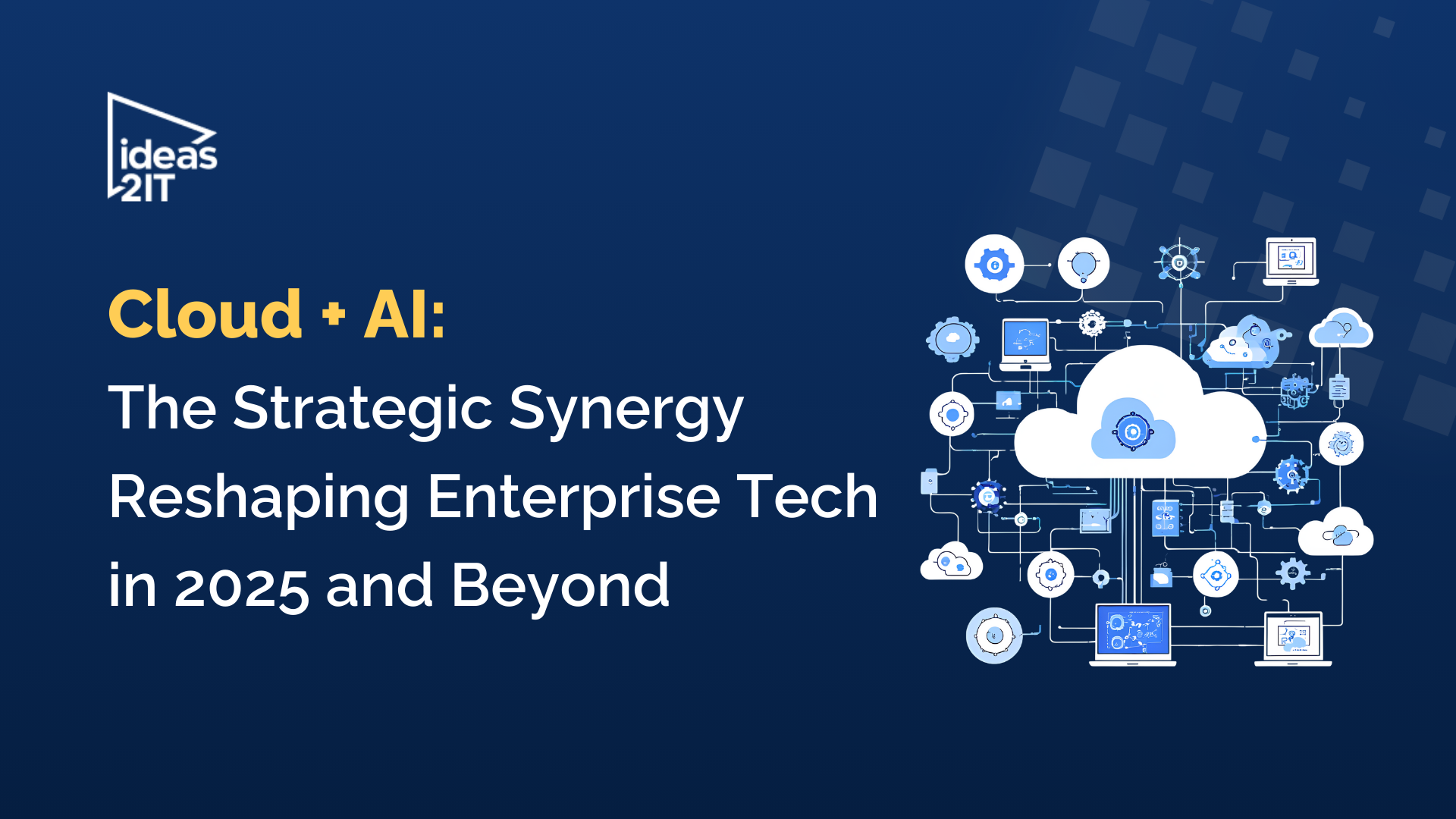5 Things to Master to Become a Top Cloud Developer
TL'DR
Cloud Development has become a highly sought-after skill set, with the cloud's relevance increasing more than ever. Data from Gartner Talent Neuron states that a median Cloud Salary is $146,350 per year. Despite this healthy remuneration offering, there is a distinct shortage of Cloud Development professionals out there. There is a huge demand for professionals in this industry, and it is predicted to grow to 300 billion in 2021.Cloud developers create applications that are served in the cloud. The work they do is similar to software engineers or web engineers, except that Cloud developers make them run on virtual systems. This adds a layer of complication (especially while architecting the systems) for security and efficiency aspects. So here are the five things you should know about to become a Cloud Developer.
1. Knowledge of Cloud Service Providers
If you want to get started with Cloud Computing, you first need to understand how different Cloud service providers work. The most prominent ones are AWS, Microsoft Azure, Google, Alibaba, IBM, and more. Most of them have a free subscription tier for cloud developers to get their hands dirty. It would help if you choose which one to work with, depending on your business needs. These cloud service providers offer end-to-end services like compute, storage, databases, ML, migration - they provide just about everything related to cloud computing.
2. Computation and Storage
This is the next aspect you must pay a lot of attention to. The primary benefits of migrating your data to the cloud include better accessibility, reliability (your cloud services provider will usually maintain a backup of your data for Disaster Recovery purposes). But most importantly, you are now able to do away with the infrastructure cost because you pay as you use it with the cloud.Depending on its needs, an organization could choose from the following types of storage:
- Public Cloud Storage
- Private Cloud Storage
- Hybrid Cloud Storage
As a cloud developer, it is necessary you know where and how to store your data. For example, if your data is archived, it is better to hold it in an S3 Glacier than a standard S3 bucket (as it is more expensive to maintain a vast archive in standard storage). The moral of the story - cloud developers must choose their storage based on the type and volume of data the organization wants to store and use. One of the most widely used computation services is the EC2 instance. Cloud developers should know how to create, login, set up the termination policy, and configure security groups of EC2 instances. Installing an application in an EC2 instance is very similar to an on-premise installation. By now, you must be familiar with Containers. Containers offer a logical packaging mechanism in which applications can be abstracted from the environment in which they run. This decoupling allows container-based applications to be deployed quickly and consistently, regardless of whether the target environment is a private data centre, public cloud, or even a developer's personal laptop. It is essential to have a good understanding of Kubernetes and Docker. Service providers like AWS have their own container management system. It is also good to know how the Docker framework works, store docker images, deploy containers from docker images, etc.
3. Network & Security
As a cloud application developer, this is one of the most crucial parameters that you will need to know deeply about. Data is unarguably an organization's greatest asset, and limiting its access is vital. The ideal framework will have users at various levels of access so that not everyone can access everything. The data must be secured from public traffic. As a cloud developer, you must be aware of the security measures specific to the cloud. For example, if a few S3 buckets are holding sensitive information, not all IAM users in an AWS account should access these S3 buckets. You need to know how to assign roles for each user, so people have access to only what they need. Also, the bucket should not be accessible by the public. If you have your database in RDS (database service provided by AWS), it should not be publicly accessible. Only applications that fetch data from the RDS should be able to access the data. Proper VPC should be architected, and network security should be enforced vigorously. Cloud service providers have the option to save the credentials which need not be maintained in any repositories. Applications should be developed in a manner that while an application bootstraps, the credentials must be pulled from those credentials managers and maintained in application memory and not in any file. Serverless architecture is a more recent concept that helps reduce the overhead of managing servers. Using this, developers need to focus only on coding without worrying about server management, OS provisioning, etc. They could use a service like AWS Lambda - and write their code in Java, Python, NodeJS, etc., to achieve their business functionality. An API gateway is used to enable security to serverless systems and backend services. Enterprise clients have large sets of APIs and would require to manage them. This could include traffic management, CORS support, authorization, access control, throttling, monitoring, and API version management. As a Cloud Engineer, it is necessary to know about the API Gateway's various services and configuring them.
4. Disaster Recovery
For any computing environment, cloud security involves maintaining adequate preventive measures like:
- knowing that the data and systems are safe
- tracking the current state of security
- tracing and responding to unexpected events
Many cloud service providers have their disaster recovery measures. However, a few of them require the developers to opt for a disaster recovery policy. For example, in the case of AWS RDS, you could opt for a multizone availability configuration. Even if the primary servers fail, the secondary server will automatically take over without affecting your business. You could also configure Read Replicas in different regions. In critical applications, you could also configure load autoscaling so that additional servers come into action and help maintain the load.
5. Monitoring and Automation
After application development, go-live issues might pop up both at the application level and the hardware (server) level. Issues such as high CPU utilization, high memory utilization, server booting, application booting, DDOS attacks, insufficient storage, and load balancing are commonplace. To overcome such issues, you will need to set up a robust monitoring process. Cloud service providers have various monitoring services such as CloudWatch logs, CloudTrail, CloudWatch metrics, CloudWatch log groups, etc., to provide information about application logs and server metrics. With such services, alarms can be configured to notify whenever the acceptance limit is breached and to take necessary action. Sometimes it is necessary to take automated actions in a cloud system to heal, secure, optimize the system, and more. CloudWatch not only provides metrics but also offers options to configure automated events. These could be periodic or event-based. By scheduling events, services can be invoked at a specific time, such as automatically starting/stopping servers, backing up of data, scale-up/down of servers, etc. CloudWatch event automation includes triggering a service when the state of another service is changed. Few examples include calling the Lambda function to terminate an EC2 instance when it goes to stopped status, triggering SNS notification when a new instance is added to the autoscaling group, etc. I hope you have enjoyed reading this article and found it useful. Please let me know your comments below.About Ideas2IT:Are you looking to build a great product or service? Do you foresee technical challenges? If you answered yes to the above questions, then you must talk to us. We are a world-class Custom dot net development company. We take up projects that are in our area of expertise. We know what we are good at and more importantly what we are not. We carefully choose projects where we strongly believe that we can add value. And not just in engineering but also in terms of how well we understand the domain. Book a free consultation with us today. Let’s work together.








%20Hybrid%20Cloud%20Strategies%20for%20Modernizing%20Legacy%20Applications.avif)
%20Application%20Containerization_%20How%20To%20Streamline%20Your%20Development.avif)















